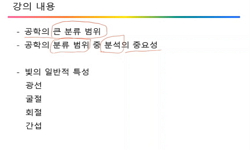We present UBVRI CCD photometry of the Type Ie supernova SN 19941 in M51 which was discovered on April 2, 1994 (UT). UBVRI CCD photometry of SN 1994 I were obtained for the period of the first two months from April 4, 1994, using the Seoul National Un...
http://chineseinput.net/에서 pinyin(병음)방식으로 중국어를 변환할 수 있습니다.
변환된 중국어를 복사하여 사용하시면 됩니다.
- 中文 을 입력하시려면 zhongwen을 입력하시고 space를누르시면됩니다.
- 北京 을 입력하시려면 beijing을 입력하시고 space를 누르시면 됩니다.
https://www.riss.kr/link?id=A101343790
-
저자
LEE MYUNG GYOON (Department of Astronomy, Seoul National University) ; KIM EUNHYEUK (Department of Astronomy, Seoul National University) ; KIM SANG CHUL (Department of Astronomy, Seoul National University) ; KIM SEUNG LEE (Department of Astronomy, Seoul National University) ; PARK WON KEE (Department of Astronomy, Seoul National University) ; PYO TAE SOO (Department of Astronomy, Seoul National University)
- 발행기관
- 학술지명
- 권호사항
-
발행연도
1995
-
작성언어
English
- 주제어
-
등재정보
SCIE,SCOPUS,KCI등재
-
자료형태
학술저널
- 발행기관 URL
-
수록면
31-43(13쪽)
- 제공처
- 소장기관
-
0
상세조회 -
0
다운로드
부가정보
다국어 초록 (Multilingual Abstract)
We present UBVRI CCD photometry of the Type Ie supernova SN 19941 in M51 which was discovered on April 2, 1994 (UT). UBVRI CCD photometry of SN 1994 I were obtained for the period of the first two months from April 4, 1994, using the Seoul National University Observatory 60 cm telescope. The light curves of SN 19941 show several interesting features: (a) SN 19941 reaches the maximum brightness at B-band on April 8.23 (B = 13.68 mag), at V-band on April 9.10 (V = 12.89 mag), and at I-band on April 10.32 (I = 12.48 mag); (b) The light curves around the maximum brightness are much narrower than those of other types of supernovae; (c) The light curves after the peak decline more steeply than those of other types of supernovae; and (d) The colors get redder from $(V-R){\approx}0.2 mag ((V - I){\approx} 0.3 mag, (B - V){\approx}0.7 mag)$ on April 4 to $(V-R){\approx}0.6 mag ((V-1){\approx}0.9 mag, (B-V){\approx}1.3 mag)$ on April 18. Afterwards (V - R) colors get bluer slightly $(by\~0.005 mag/day)$, while (V-I) colors stay almost constant around $(V-1){\approx}1.0 mag$. The color at the maximum brightness is (B-V)=0.9 mag, which is $\~1$mag redder than the mean color of typical Type la supernovae at the maximum brightness. The light curves of SN 1994I are similar to those of the Type Ie supernova SN 1962L in NGC 1073. Adopting the distance modulus of $(m-M)_0 = 29.2 mag$ and the reddening of E(B - V) = 0.45 mag [Iwamoto et al. 1994, preprint for ApJ], we derive absolute magnitudes at the maximum brightness of SN 1994I, Mv(max) = -17.7 mag and MB(max) = -17.4 mag. This result shows that SN 1994I was $\~2$mag fainter at the maximum brightness compared with typical Type Ia supernovae. A narrower peak and faster decline after the maximum in the light curve of SN 1994I compared with other types of supernovae indicate that the progenitor of SN 1994I might be a lower mass star compared with those of other types of supernovae.
동일학술지(권/호) 다른 논문
-
SUNSPOTS AND THEIR ASSOCIATED SOLAR ACTIVITIES I. PHYSICAL CHARACTERISTICS OF A WHITE LIGHT FLARE
- The Korean Astronomical Society
- LEE SANG-WOO
- 1995
- SCIE,SCOPUS,KCI등재
-
SMALL $H_3^+$ EMISSION PATCHES IN THE VICINITY OF JUPITER'S AURORAL REGIONS
- The Korean Astronomical Society
- KIM YONG-HA
- 1995
- SCIE,SCOPUS,KCI등재
-
STABILITY OF THE TWO-TEMPERATURE ACCRETION DISK
- The Korean Astronomical Society
- PARK MYEONG-GU
- 1995
- SCIE,SCOPUS,KCI등재
-
THE RADIO SOURCE LIST AND THE COUNT AT 1420 MHz IN THE FIELD OF ABELL 2256
- The Korean Astronomical Society
- KIM KWANG TAE
- 1995
- SCIE,SCOPUS,KCI등재







 ScienceON
ScienceON 코리아스칼라
코리아스칼라



